There are several areas in which connected field service can change asset management for field service organizations in the not too distant future. In this first feature in a series of excerpts from the latest white paper from Field Service News, we...
ARCHIVE FOR THE ‘news’ CATEGORY
Feb 07, 2022 • News • Digital Transformation • IoT • servicenow
There are several areas in which connected field service can change asset management for field service organizations in the not too distant future. In this first feature in a series of excerpts from the latest white paper from Field Service News, we shall explore some of the potential benefits of IoT enabled assets...
Asset Self-Monitoring:
The traditional paradigm of field service has relied on an asset breaking down, a service request being submitted, an engineer being dispatched, and in an ideal world, resolving the issue in a first-time fix. Even when this process is undertaken with optimum efficiency, when everything goes perfectly, there is still a significant amount of downtime between asset failure and issue resolution.
Of course, many field service organizations introduced planned preventative maintenance (PPM) to help their customers avoid unnecessary downtime. However, helping in this first issue of reducing unnecessary downtime, a PPM based-approach results in unnecessary service calls, which can become an additional cost-line either for the service provider or the customer.
Despite PPM being often viewed as an improvement on the break-fix approach, the truth is that depending on the importance of the asset in the customers own revenue generation, either a break-fix or PPM approach may have been the best option within a service portfolio. However, ultimately neither are optimum.
In a world of connected field service, we can move beyond PPM and introduce true pro-active maintenance into a service portfolio.
To illustrate this, let us take a simple example of a hot drink vending machine with a failing boiling mechanism.
In the old break-fix model, the issue would be eventually noticed by a customer, who would report their cup of hot morning coffee wasn’t piping hot. Eventually, a customer complaint would lead to the arrangement of a service call; the vending machine would be turned off, so no longer generating any revenue until an engineer could be sent to resolve the issue.
"IoT offers a far greater workflow by allowing the asset itself to, in effect, undertake that inspection requirement and then the service company only need schedule necessary maintenance as and when it is required..."
In a PPM environment, this fault may be picked up before it was reported by a customer, which could help mitigate unplanned downtime. However, it is not cost-effective to send a technician skilled enough to resolve the issue on an inspection call.
The alternative is for the field service organization to commit to sending a skilled resource to a series of calls where their skill-set is not being used to maximum effect (i.e. those calls where there is no fault to be resolved). Yet, of course, there is no benefit to the customer to pay for one set of technicians to undertake inspection calls if they cannot resolve any issues they may find.
While offering an enhanced layer of service to the customer, such an approach ultimately results in a bloated cost base for the service provider. However, IoT offers a far greater workflow by allowing the asset itself to, in effect, undertake that inspection requirement and then the service company only need schedule necessary maintenance as and when it is required.
In the example of our vending machine, the machine could have a sensor that monitors the temperature of the water when it reaches boiling point in the delivery of the coffee. If the average temperature of the water begins to hit outside of an acceptable parameter that indicates an imminent failure, with an IoT connected asset, an alert could be triggered automatically.
What Comes Next?
The above example allows us to see how even in just a very simple situation how having just one data feed on an asset could have a significant benefit for both service provider and their customer alike. The customer benefits from proactive maintenance that can be primarily scheduled in off-peak hours where the impact of downtime is minimized. The service provider has a considerable reduction in costs as truck-rolls are minimized to effective work.
However, we could also expand on this simple example in several ways to further leverage this IoT data feed to enhance the service delivery process.
Connection to Engineer and Parts Scheduling
The most obvious first step would be to schedule an engineer directly if sensor data crosses a threshold to trigger an action within an organization’s field service management solution. The reality is that this chain of processes is precisely the type of mundane process automation that Robotic Process Automation (RPA) is designed for.
The rules could be fairly straightforward to make this happen. If the water temperature moves outside of acceptable parameters by two degrees, then historic data can interpret that this is an indication of failure. To keep the example simple, let us assume a direct correlation between the degrees outside the defined parameters and the mean-time-to-failure. In a real-life scenario, the modelling may be more complex, but for clarity of the concept, let us just assume that as the water falls a couple of degrees below the accepted parameters, this is an indication of the asset falling within the next three weeks.
This provides us with a fairly routine set of requirements that we would want to automate. By leveraging the IoT asset data and data within our workforce management tools, we can begin to map this out reasonably simply.
- If the water temperature falls outside of standard parameters by 2 degrees, an engineer needs to be scheduled to provide a proactive repair within three weeks. This is asset data provided by IoT.
- Identify potential fault cause ahead of the engineer visit. This is where the asset data can be filtered through a knowledge bank via Artificial Intelligence (AI).
- Identify which technicians are local to this area, have the required skills-set and availability within the timeframe. This is workforce data held within the relevant system of record.
- Identify potential spare parts required and arrange for them to be delivered to the client site, engineer or drop off location ahead of a service call to allow the best opportunity for a first-time fix. This is a trigger based on the output of the AI triage being fed into either a dedicated parts and inventory or FSM solution.
All of this can be done and fed either directly to the customer themselves or potentially a customer service agent who can contact the customer with a list of potential solutions and times that a field technician can be dispatched to resolve the problem in the absolute minimum impact to the customer's business.
Facilitation of Self-Service Solutions
The above allows us to see how the use of RPA being fed by IoT data with a layer of AI can dramatically change how we approach field service delivery. However, in the above example, we could even take this a step further and look to utilize the same tools to facilitate a self-service approach to maintenance.
Let us for a moment consider once more the vending machine in our example and take into account another potential development into this mix, modular design. If the customer could easily replace the failing part, the process could be slightly reworked to allow for self-service.
The exact same processes could be leveraged to facilitate such an approach.
However, in the final stage of this process, the customer being contacted directly via automation or via a customer service agent could be given the opportunity to undertake the maintenance themselves.
"The question of utmost importance in this instance is what is in it for the customer? The answer would be in two of the most precious commodities of the twenty-first century; time and convenience..."
Clear instructions on the maintenance could be sent to the customer via the knowledge base digitally, and the required parts could be identified and dispatched to the customer directly.
Suppose we include a remote service support solution within the technology stack of the field service provider. In that case, the customer could even be given a link for real-time support as they undertake the maintenance. The question of utmost importance in this instance is what is in it for the customer? The answer would be in 2 of the most precious commodities of the 21st century; time and convenience.
Self-service allows the customer to have their asset up and running without the wait for an available engineer. Self-service allows the customer to ensure the maintenance is undertaken when their own customers are not present.
Of course, such an approach may not be suitable for every situation. However, it is certainly something that is capturing the attention of many in the field service sector. Such an approach is made infinitely more seamless as we look to build upon the current use of IoT-based asset data.
The Question of Data Ownership
While there are undoubtedly as we have seen, many opportunities for IoT to drive consistent improvement in asset management, the one area we must also address in this conversation is the challenge of data ownership.
This has been something of a critical and often contentious topic of conversation as we move into a new era of field service and indeed business at large that is driven by data - the great resource of the twenty-first century.
The conversation is particularly complex - does data generated by an asset fall within the protection of patents so remain with the manufacturer? Or is the data created through use so generated by the customer and as such the output of their own work and something they own?
It is one of the big discussions that we will collectively need to resolve as we move ever onwards in our data-driven digital transformation journey. Yet, in some ways a focus on the granular debate of data ownership should and must make way for the macro discussion of how we can leverage the data for the benefit of the customer.
As Tasker Generes, Global Head – Strategy and Information, ServiceNow explained on the Field Service News Digital Symposium “The question of who owns what data is a thorny issue that we are currently in the middle of trying to really get to grips with as an industry.
“However, I believe the discussion ultimately comes down to the fact that customers want it to be really easy to engage with any company they are doing business with. Frankly, if it is not easy to engage they are going to leave because they have options. When you are looking at data, it is really necessary for those who need to know to understand the inner workings of what goes wrong, but customers more often than not just want the service or product they use to work.
"We have to understand as an industry that going forward this market is massively evolving. These changes we are moving through currently will bring with them complex questions over privacy, data and ownership and data stewardship..."
- Tasker Generes, ServiceNow
“The real challenge is determining what is and what isn’t needed within the data set. It is identifying how do we really become proactive and help prevent the issue. In order to do this we cannot look at IoT as a standalone; it has to be viewed with additional context of other variables relevant to the specific situation. It is imperative that the service provider is able to get the data into a position where it offers actionable insight. IoT can offer us so much data, but to be able to have those brilliant insights, it has to be tied to the action.
“We have to understand as an industry that going forward this market is massively evolving. These changes we are moving through currently will bring with them complex questions over privacy, data and ownership and data stewardship. With Industry 4.0 and the current digital trends, access to data is going to be required to deliver the customer the great service they expect.
“However, as service providers, we now must understand that customers whether it is in the B2B or consumer verticals, don’t want to be ‘on the grid’ and let people learn everything about them through their data.
“So the critical question service providers must consider is ‘how do we create the ability to learn from the data in a set rather than for the individual?'”
Read this latest Field Service News Paper Now!
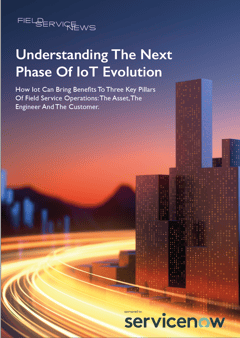 If you are a Field Service News subscriber on either our free-forever FSN Standard subscription tier or our Premium Subscription tier you can access this exclusive Field Service News white paper written by Field Service News, Editor-in-Chief, Kris Oldland on the button below.
If you are a Field Service News subscriber on either our free-forever FSN Standard subscription tier or our Premium Subscription tier you can access this exclusive Field Service News white paper written by Field Service News, Editor-in-Chief, Kris Oldland on the button below.
If you are not yet a subscriber to Field Service News but would like to subscribe and gain access to this report instantly, click the button to visit a dedicated registration page for our complimentary sponsored subscription tier and that will give you instant access to this paper and a number of other assets currently available to subscribers on this tier.
 Data usage note: By accessing this content you consent to the contact details submitted when you registered as a subscriber to fieldservicenews.com to be shared with the listed sponsor of this premium content, ServiceNow who may contact you for legitimate business reasons to discuss the content of this paper.
Data usage note: By accessing this content you consent to the contact details submitted when you registered as a subscriber to fieldservicenews.com to be shared with the listed sponsor of this premium content, ServiceNow who may contact you for legitimate business reasons to discuss the content of this paper.
Further Reading:
- Read more about Digital Transformation @ www.fieldservicenews.com/digital-transformation
- Read more about IoT and Field Service @ www.fieldservicenews.com/IoT
- Find out more about how ServiceNow is working with Field Service Companies @ www.servicenow.com
- Follow ServiceNow on Twitter @ twitter.com/ServiceNowUKI
- Read more about Service Strategy and Design @ www.fieldservicenews.com/service-innovation-and-design
Feb 03, 2022 • News • Digital Transformation • IoT • servicenow
Field Service News and ServiceNow have recently partnered on an exclusive new white paper "Understanding The Next Phase Of IoT Evolution" and as part of the planning for this paper Kris Oldland, Editor-in-Chief, Field Service News was joined on the...
Field Service News and ServiceNow have recently partnered on an exclusive new white paper "Understanding The Next Phase Of IoT Evolution" and as part of the planning for this paper Kris Oldland, Editor-in-Chief, Field Service News was joined on the Field Service News Digital Symposium by Tasker Generes and Bulent Cinarkaya of ServiceNow to discuss how IoT can improve asset management, workforce management and drive customer success.
In this excerpt from that discussion, the three discuss the importance of being able to process data in order to drive actionable insights that can drive improvements across the field service operation.
If you are an FSN Premium subscriber you can access the full interview now on the button below. Alternatively, if you are yet to subscribe or are on our forever-free subscription you can join FSN Premium on the button below and get full access to the entire FSN Premium resource library.
Read this latest Field Service News Paper Now!
 If you are a Field Service News subscriber on either our free-forever FSN Standard subscription tier or our Premium Subscription tier you can access this exclusive Field Service News white paper written by Field Service News, Editor-in-Chief, Kris Oldland on the button below.
If you are a Field Service News subscriber on either our free-forever FSN Standard subscription tier or our Premium Subscription tier you can access this exclusive Field Service News white paper written by Field Service News, Editor-in-Chief, Kris Oldland on the button below.
If you are not yet a subscriber to Field Service News but would like to subscribe and gain access to this report instantly, click the button to visit a dedicated registration page for our complimentary sponsored subscription tier and that will give you instant access to this paper and a number of other assets currently available to subscribers on this tier.
 Data usage note: By accessing this content you consent to the contact details submitted when you registered as a subscriber to fieldservicenews.com to be shared with the listed sponsor of this premium content, ServiceNow who may contact you for legitimate business reasons to discuss the content of this paper.
Data usage note: By accessing this content you consent to the contact details submitted when you registered as a subscriber to fieldservicenews.com to be shared with the listed sponsor of this premium content, ServiceNow who may contact you for legitimate business reasons to discuss the content of this paper.
Further Reading:
- Read more about Digital Transformation @ https://www.fieldservicenews.com/blog/tag/digital-transformation
- Read more about IoT and Field Service @ https://www.fieldservicenews.com/hs-search-results?term=IoT
- Find out more about how ServiceNow is working with Field Service Companies @ https://www.servicenow.com/
- Follow ServiceNow on Twitter @ https://twitter.com/ServiceNowUKI
- Read more about Service Strategy and Design @ https://www.fieldservicenews.com/blog/tag/service-innovation-and-design
- Watch more in-depth interviews in the Field Service News Digital Symposium @ https://www.fieldservicenews.com/digital-symposium
Feb 01, 2022 • News • Digital Transformation • IoT • servicenow
Field Service News and ServiceNow have recently partnered on an exclusive new white paper "Understanding The Next Phase Of IoT Evolution" and as part of the planning for this paper Kris Oldland, Editor-in-Chief, Field Service News was joined on the...
Field Service News and ServiceNow have recently partnered on an exclusive new white paper "Understanding The Next Phase Of IoT Evolution" and as part of the planning for this paper Kris Oldland, Editor-in-Chief, Field Service News was joined on the Field Service News Digital Symposium by Tasker Generes and Bulent Cinarkaya of ServiceNow to discuss how IoT can improve asset management, workforce management and drive customer success.
In this first excerpt from that discussion, the group discuss the accelerated path of digital transformation in the field service sector and what that means for the future of service delivery.
If you are an FSN Premium subscriber you can access the full interview now on the button below. Alternatively, if you are yet to subscribe or are on our forever-free subscription you can join FSN Premium on the button below and get full access to the entire FSN Premium resource library.
Read this latest Field Service News Paper Now!
 If you are a Field Service News subscriber on either our free-forever FSN Standard subscription tier or our Premium Subscription tier you can access this exclusive Field Service News white paper written by Field Service News, Editor-in-Chief, Kris Oldland on the button below.
If you are a Field Service News subscriber on either our free-forever FSN Standard subscription tier or our Premium Subscription tier you can access this exclusive Field Service News white paper written by Field Service News, Editor-in-Chief, Kris Oldland on the button below.
If you are not yet a subscriber to Field Service News but would like to subscribe and gain access to this report instantly, click the button to visit a dedicated registration page for our complimentary sponsored subscription tier and that will give you instant access to this paper and a number of other assets currently available to subscribers on this tier.
 Data usage note: By accessing this content you consent to the contact details submitted when you registered as a subscriber to fieldservicenews.com to be shared with the listed sponsor of this premium content, ServiceNow who may contact you for legitimate business reasons to discuss the content of this paper.
Data usage note: By accessing this content you consent to the contact details submitted when you registered as a subscriber to fieldservicenews.com to be shared with the listed sponsor of this premium content, ServiceNow who may contact you for legitimate business reasons to discuss the content of this paper.
Further Reading:
- Read more about Digital Transformation @ https://www.fieldservicenews.com/blog/tag/digital-transformation
- Read more about IoT and Field Service @ https://www.fieldservicenews.com/hs-search-results?term=IoT
- Find out more about how ServiceNow is working with Field Service Companies @ https://www.servicenow.com/
- Follow ServiceNow on Twitter @ https://twitter.com/ServiceNowUKI
- Read more about Service Strategy and Design @ https://www.fieldservicenews.com/blog/tag/service-innovation-and-design
- Watch more in-depth interviews in the Field Service News Digital Symposium @ https://www.fieldservicenews.com/digital-symposium
Jan 31, 2022 • News • Digital Transformation • IoT • servicenow
Field Service News is pleased to announce our latest white paper, published in partnership with ServiceNow that looks at three key areas in which IoT can enhance service delivery...
Field Service News is pleased to announce our latest white paper, published in partnership with ServiceNow that looks at three key areas in which IoT can enhance service delivery...
A study by Field Service News Research in 2021 revealed that the field service sector, has now firmly embraced IoT. In that study, which had input from over 280 field service professionals, 76% of field service companies now had some connectivity with their install base.
It would appear the first phase of IoT adoption is getting closer to completion. Certainly, the underlying infrastructure is largely established.
Indeed, we are also seeing signs of how this technological innovation can begin to reshape the field service sector. Another study hosted by Field Service Research, this one running also in 2021, identified that 65% of over 130 field service companies were leveraging remote diagnostics and IoT to develop a remote service offering.
Yet, despite the recent acceleration of digital transformation within the field service sector, driven mainly by necessity during the pandemic, it could be argued that still these are just the embryotic days of a new era of IoT-connected field service.
With the foundations of an IoT infrastructure in place, we can begin to truly explore the potential of IoT within the field service sector, but what does that look like and how will that impact the way we manage assets, the way we manage our field workers and perhaps most importantly of all, how we help our customers towards success.
Field Service News, in partnership with ServiceNow, has recently published a paper in which we will take a forward look to a future that could be possible as we learn to leverage IoT.
This paper is not a deep dive into the technology itself, instead, we will take a simplified example to outline what could be possible to help you facilitate the wider thinking and reflection of how such principles could be applied to your own business.
At the end of the paper, you will find a series of reflection points to allow you to further refine how you could see the adoption of IoT enhancing your service operations in terms of asset management, workforce management and customer success.
Read this latest Field Service News Paper Now!
 If you are a Field Service News subscriber on either our free-forever FSN Standard subscription tier or our Premium Subscription tier you can access this exclusive Field Service News white paper written by Field Service News, Editor-in-Chief, Kris Oldland on the button below.
If you are a Field Service News subscriber on either our free-forever FSN Standard subscription tier or our Premium Subscription tier you can access this exclusive Field Service News white paper written by Field Service News, Editor-in-Chief, Kris Oldland on the button below.
If you are not yet a subscriber to Field Service News but would like to subscribe and gain access to this report instantly, click the button to visit a dedicated registration page for our complimentary sponsored subscription tier and that will give you instant access to this paper and a number of other assets currently available to subscribers on this tier.
 Data usage note: By accessing this content you consent to the contact details submitted when you registered as a subscriber to fieldservicenews.com to be shared with the listed sponsor of this premium content, ServiceNow who may contact you for legitimate business reasons to discuss the content of this paper.
Data usage note: By accessing this content you consent to the contact details submitted when you registered as a subscriber to fieldservicenews.com to be shared with the listed sponsor of this premium content, ServiceNow who may contact you for legitimate business reasons to discuss the content of this paper.
Further Reading:
- Read more about Digital Transformation @ https://www.fieldservicenews.com/blog/tag/digital-transformation
- Read more about IoT and Field Service @ https://www.fieldservicenews.com/hs-search-results?term=IoT
- Find out more about how ServiceNow is working with Field Service Companies @ https://www.servicenow.com/
- Follow ServiceNow on Twitter @ https://twitter.com/ServiceNowUKI
- Read more about Service Strategy and Design @ https://www.fieldservicenews.com/blog/tag/service-innovation-and-design
Jan 19, 2022 • News • BigChange • Digital Transformation • field service management • Service CRM • EMEA • COMPLETE SHUTTER SERVICES
Pinnacle Group has transformed its customer experience and increased operational efficiency following the implementation of the latest field service management software from BigChange.
Pinnacle Group has transformed its customer experience and increased operational efficiency following the implementation of the latest field service management software from BigChange.Supporting over 300,000 homes, 200 schools and 100 public and private buildings, Pinnacle is one of the UK’s largest facilities management providers. Using BigChange, Pinnacle has achieved a significant improvement in transparency and communication with clients by delivering live operational information and has overcome challenges resulting from the pandemic which saw a reduced workforce facing an increased workload.
USING BIGCHANGE'S FIELD SERVICE SOFTWARE, PINNACLE CAN RECORD, MONITOR AND CONTROL EVERY TASK IN REAL-TIME
“Since implementing BigChange we have seen real time savings and productivity gains resulting in better quality of service, reduced resources and costs, and increased client and customer satisfaction,” commented Raaj Bharania, Pinnacle Group Business Manager. “This can be directly translated into contract extensions and new contract awards.”
Pinnacle is a community-facing, people-first business that delivers, manages and maintains communities and places – including multi-tenure housing, schools, open spaces, public and private buildings, retail schemes, distribution centres, manufacturing plants, utilities and broadband networks – as well as a range of complementary employment and wellbeing outcomes. Formed in 1994, Pinnacle operates nationwide with major hubs in London, Chelmsford, Slough, Birmingham, Leeds, Morecambe, Stoke and Carlisle. Pinnacle provides integrated Facilities Management across all sectors and the frontline operation makes around 1,400 call outs per day with an 80/20 split between scheduled and reactive.
Since implementing the complete job management solution, which incorporates customer relationship management (CRM), job scheduling, live tracking, field resource management, financial management and business intelligence in one simple to use and easy to integrate platform, Pinnacle can record, monitor and control every task in real-time. Details of site inspections and service delivery visits are captured, recorded and reported, complete with before and after photos, using a traffic light system allowing operatives to self-certify works.
“By giving clients access to the BigChange platform we have been able to reduce the time spent monitoring and reporting as they can access the information they need when they need it,” said Area Manager Marcin Rosiak whilst Business Manager Seundouss Laroussi added, “BigChange has been transformational for us, and our clients, and we cannot imagine our operation without it!”
BigChange has already been deployed on over 90 percent of Pinnacles soft FM contracts where it has been tailored to meet specific KPIs, SLAs and reporting requirements and roll out on the remaining 10 percent is ongoing. Further planned work includes the transition to a completely paperless operation and the use of BigChange to improve workforce engagement and health and safety management.
Further Reading:
- Read more about Digital Transformation @ www.fieldservicenews.com/digital-transformation
- Read more about Field Service Management @ www.fieldservicenews.com/field-service-management
- Read more about BigChange on Field Service News @ www.fieldservicenews.com/bigchange
- Learn more about BigChange @ www.bigchange.com
- Find out more about Pinnacle Group @ www.pinnaclegroup.co.uk
- Follow BigChange on Twitter @ twitter.com/bigchangeapps
Getac has announced the launch of its ZX10 fully rugged tablet, a versatile new 10-inch device built around the Android 11 operating system (OS).
Getac has announced the launch of its ZX10 fully rugged tablet, a versatile new 10-inch device built around the Android 11 operating system (OS).
The ZX10 will sit alongside Getac’s popular ZX70 fully rugged 7-inch Android tablet, giving customers in industries such as public safety, utilities, energy, transport & logistics, manufacturing, automotive, and defence more options when choosing rugged Android devices that best suit their operational needs.
Powerful Operational Efficiency
The ZX10’s combination of Android 11 OS, Qualcomm Snapdragon 660 Mobile Platform, and Adreno™ 512 GPU delivers a seamless user experience, enabling efficient workflow in a wide range of field scenarios. Dual hot-swappable batteries ensure full-shift operation, while the LumiBond® sunlight readable display (boasting 800nits of brightness) with rain and glove touch capability helps maintain productivity in a range of weather conditions. The ZX10 also has options of up to 6GB LPDDR4 RAM and 128GB storage to help customers prepare for future industry demands.
Excellent Field Communications
An 8MP front camera and best-in-class 16MP rear camera deliver exceptionally high-quality photo/video capture, while dual integrated microphones filter out loud background noise for enhanced audio quality. Elsewhere, Wi-Fi 802.11 ac, Bluetooth (v5.0), dedicated GPS and an optional 4G LTE module offers rapid data transfer and location positioning capabilities in remote field locations. Dual LTE SIM card slots allow field workers to quickly switch between two 4G network carriers. The support to CBRS private network further increases operational flexibility.
Industry Leading Rugged Reliability
Like all Getac devices, the ZX10 is built rugged from the ground up to provide exceptional reliability and peace of mind. MIL-STD-810H and IP66 certification means it can easily withstand drops of up to six feet, shocks, rain, vibration, dust, and liquid spillages. Furthermore, an operating temperature range of -29°C to 63°C (-20°F~145°F) delivers year-round usability. With all these built-in rugged features, the ZX10 is still only 17.9mm thick and weighs just over 1kg, offering excellent portability and mobility in the field.
Ideally Suited to Key Industry Applications
The ZX10 is designed to meet the needs of public safety, utilities, energy, transport & logistics, manufacturing, automotive, and defence professionals who utilise Android-based devices. As part of Getac Select®, it is available in a range of industry specific builds that combine different features, accessories, and software utilities to help customers quickly solve everyday challenges. Below are some example use cases:
Data capture and ePCR access for emergency first responders
Emergency first responders require real-time access to electronic patient health records (ePCRs) to deliver appropriate care and medication, often in high pressure environments. The ZX10’s powerful connectivity options allow them to quickly access this information, while optional barcode/RFID and smart card readers help verify IDs, check operational procedures, and ensure patient confidentiality.
Rugged, full-shift reliability for field utilities engineers
When conducting outdoor activities like GIS mapping, utilities engineers need devices they can rely on in a variety of weather conditions. Furthermore, a lack of access to charging facilities while working in remote locations means long battery life is vitally important. The ZX10’s fully rugged design, dedicated GPS, versatile LumiBond® display with rain and glove touch capability, and dual hot-swappable battery design gives field engineers the peace of mind they need, wherever their duties take them.
Remote communications and asset maintenance for energy workers
Energy workers must regularly inspect and maintain assets in the field, but often require remote support from experts to do so effectively. The ZX10’s mobile connectivity, best-in-class 8MP front camera and 16MP rear camera and dedicated GPS lets workers interact with colleagues around the world in real-time, quickly share/exchange information, and complete tasks at the first time of asking. Dual LTE SIM card slots also let them quickly switch between two different carrier networks without having to swap SIM cards and staying connected conveniently.
Optimising efficiency for warehouse employees and forklift drivers
Warehouse employees and forklift drivers need to collect and move goods between multiple different environments, ranging from internal cold storage and climate-controlled areas to external yards that are exposed to the weather and elements. The ZX10’s compact yet rugged design and wide operating temperature range means it can seamlessly transition between these environments without fear of damage or disruption. Additionally, the optional barcode/RFID-reader and range of programmable buttons makes it quick and easy to identify/process items in a matter of seconds.
“As Android continues to gain popularity, a growing number of organisations are looking for rugged Android solutions that enable them to enjoy the versatility it has to offer, even when working in harsh and/or challenging environments,” says Rick Hwang, President of Getac Technology Corporation. “The ZX10 does exactly that, expanding our line-up of Android-based solutions and helping customers optimise their operational efficiency, while also hitting all-important total cost of ownership targets.”
Availability:
The ZX10 will be available in March.
Jan 14, 2022 • Fleet Technology • News • fleet management • Sustainability • Webfleet Solutions • Service Innovation and Design • EMEA
Three-quarters (74 per cent) of UK fleets have adopted more digital solutions since the start of the COVID-19 pandemic, new research has revealed.
Three-quarters (74 per cent) of UK fleets have adopted more digital solutions since the start of the COVID-19 pandemic, new research has revealed.
A pan-European study conducted by Webfleet Solutions among 1,050 fleet decision-makers found that in the UK, smaller fleets of up to 50 vehicles led the charge, accounting for 80 per cent of the tech adopters.
SME BUSINESSES HAVE RECOGNIZED THE VITAL ROLE THAT TECHNOLOGY CAN PLAY IN OVERCOMING THE FINANCIAL AND LOGISTICAL CHALLENGES
Electronic signature tech (60 per cent) topped the list of the new digital solutions, followed by mobile apps (50 per cent) and digital document systems, such as paperless invoicing (44 per cent). In every case, the uptick in digitisation was found to have helped their businesses deal with the pandemic.
“COVID-19 continues to have a dramatic impact on the way we live and work, making operational flexibility, smart customer interactions, risk management and cost control more important than ever,” said Beverley Wise, Sales Director UK and Ireland, Webfleet Solutions.
“SME businesses, in particular, have had the agility to respond quickly to the ever-changing commercial landscape and have recognised the vital role that technology can play in overcoming the financial and logistical challenges – improving the efficient flow of information, supporting remote working and minimising person-to-person interactions.”
Indeed, the drive to increase efficiency was found to be top reason for UK fleets adopting more digital solutions, cited by more than half (55 per cent) of those surveyed. This was closely followed by efforts to reduce the spread of infection (51 per cent) and a continued commitment to sustainability (49 per cent).
Of those that haven’t adopted more digital solutions, 28 per cent cited cost as a barrier, 28 per cent said they had enough in place, while 22 per cent said they lacked the time or resources to implement new systems.
The Netherlands led the digitisation trend with 85 per cent adopting new digital solutions, followed by Italy and Spain (both 77 per cent).
For an overview of the findings, download the infographic here.
Further Reading:
- Read more about Digital Transformation @ www.fieldservicenews.com/service-innovation-and-design
- Read more about Fleet Technology @ www.fieldservicenews.com/fleet-technology
- Learn more about Webfleet Solutions @ www.webfleet.com
- Read more about Webfleet Solutions on FSN @ www.fieldservicenews.com/webfleet-solutions
- Follow WebFleet Solutions on Twitter @ twitter.com/Webfleetnews
Jan 12, 2022 • News • construction • Volvo Construction • Sustainability • ABAX • Service Innovation and Design • EMEA
The construction sector accounts for a significant amount of CO2 emissions worldwide, and is still far behind in the green transition.
The construction sector accounts for a significant amount of CO2 emissions worldwide, and is still far behind in the green transition. With all Volvo machines now available in ABAX Smart Connect, the digitalisation of the industry can accelerate and help reduce climate emissions - using technology that is already installed and ready for use.
CHEAPER SOLUTIONS OVER SUSTAINABLE
A new report conducted by Ramirent* in Sweden shows that cheap alternatives are often chosen in favour of sustainable solutions, even though the cheap alternatives rarely prove to be cost-saving. With the right sustainability measures, which can be easily implemented, climate emissions from the construction industry can be drastically reduced.
TOP FOUR LEADING HEAVY EQUIPMENT MANUFACTURES AVAILABLE
ABAX is a telematics company that has minimised the digital threshold for the construction industry. With ABAX Smart Connect, they have made it easier for fleet owners to be aware of their emissions.
The top leading manufacturers** such as Catepillar, Hitachi and John Deere are already connected to ABAX Smart Connect. When Volvo now joins, the service will be available for a significant number of machine fleets worldwide. Through ABAX Smart Connect, construction companies receive ongoing status updates on their machines. In practice, this means greater control of unnecessary operating and service costs, and a daily status update on consumption and compilation of CO2 footprints. The technology is already installed in all Volvo machines, and the only thing required to use the digital tool is a connection to ABAX Smart Connect.
Volvo is a significant supplier of machines to the Scandinavian market. The opportunity to be able to connect to technology that is already installed in Volvo's machines will enable major gains for both the environment and costs. We must all take responsibility and take advantage of the development opportunities that exist, not least in an industry with a major impact on society. We want to inspire others in the industry to make a difference and expand their digital services, says Paul Walsh, CTO of ABAX.
According to the Paris Agreement, today's emissions of greenhouse gases will be reduced by 40 % by 2030. Emissions from the construction industry have a direct impact on how all of the individual countries will contribute to the common goal for the EU. A prominent method of improvement is digitisation.
Further Reading:
- Read more about Service Innovation and Design @ www.fieldservicenews.com/service-innovation-and-design
- Read more about Sustainability on Field Service News @ www.fieldservicenews.com/automation
- Read more about Volvo CE on Field Service News @ www.fieldservicenews.com/topcon
- Find out more more about Volvo CE @ www.volvoce.com
- Learn more about ABAX @ www.abax.com
- Follow ABAX on Twitter @ twitter.com/ABAXUK
Jan 11, 2022 • News • Electric Vehicles • fleet management • Sustainability • UK • Service Innovation and Design • EMEA • VIMCAR
A new report from Vimcar, the fleet management provider for SMEs, reveals that the majority of petrol and diesel fleet cars on the roads in the UK and Europe could be switched to electric vehicles.
A new report from Vimcar, the fleet management provider for SMEs, reveals that the majority of petrol and diesel fleet cars on the roads in the UK and Europe could be switched to electric vehicles.From analysis of over 67,000 company fleet vehicles, the findings take into account the average distance fleet vehicles are travelling, compared to the mileage range on electric vehicles.
87% of companies said that the mileage range of electric vehicles is the main concern when considering whether or not they should make the switch to electric. However, the data suggests that mileage range is only an imagined obstacle in fleet electrification and that despite popular beliefs, most companies are in fact able to use electric vehicles without impacting the level of fleet usage. Currently, only 3% of fleet vehicles are run on electric or hybrid engines.
DATA ANALYSIS FROM ACROSS THE UK AND EUROPE REVEALS THAT MAJORITY OF FLEETS CURRENTLY ON THE ROAD COULD BE REPLACED WITH ELECTRIC VEHICLES WITH MINIMAL DISRUPTION TO PERFORMANCE
At a time when many businesses (96%) are beginning to increase their stock and delivery offerings in the run up to Christmas, there are calls for businesses to re-evaluate their current systems to ensure they are being as eco-friendly as possible in the process.
Sami Eric, UK Country Manager at Vimcar said: “With the recent discussions held at COP26, there is no hiding the fact that we all need to be doing more to reduce our carbon footprint. One of the biggest changes businesses can make is the switch from petrol or diesel vehicles, to electric or hybrid. Unfortunately, there is often negativity associated with electric vehicle usage, and the efficiency they have for longer journeys. However, this data proves these fears wrong and that, in fact, the majority of businesses could make the switch and continue to use their fleets in the same way as they are now.”
Eric added: “Charging an electric vehicle is usually cheaper than filling up at the pump, with recent reports claiming they are also £131 a month cheaper to run. Because electric vehicles have fewer moving parts, they break down less and are cheaper to maintain – and therefore come with lower insurance costs and a longer life span. On top of this, electric vehicles have a 0% road tax and Benefit in Kind rate, therefore using electric vehicles in a company fleet will incur fewer costs for both employers and employees. And if businesses can make these changes with minimal disruption to current performance, there’s even less reason not to consider replacing their petrol and diesel vehicles with electric or hybrid vehicles instead.”
Further Reading:
- Read more about Service Innovation @ www.fieldservicenews.com/service-innovation-and-design
- Read more about Fleet Management @ www.fieldservicenews.com/fleet-management
- Learn more about Sustainability @ www.fieldservicenews.com/sustainability
- Read more about Electric Vehicles @ www.fieldservicenews.com/electric-vehicles
- Learn more about Vimcar @ vimcar.co.uk
- Follow Vimcar on Twitter @ twitter.com/goVimcar







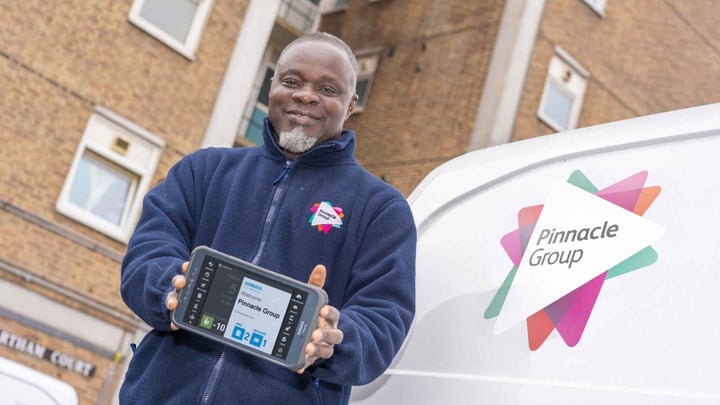

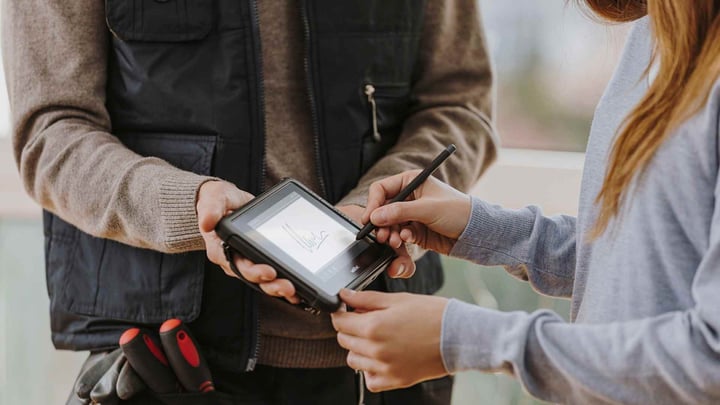
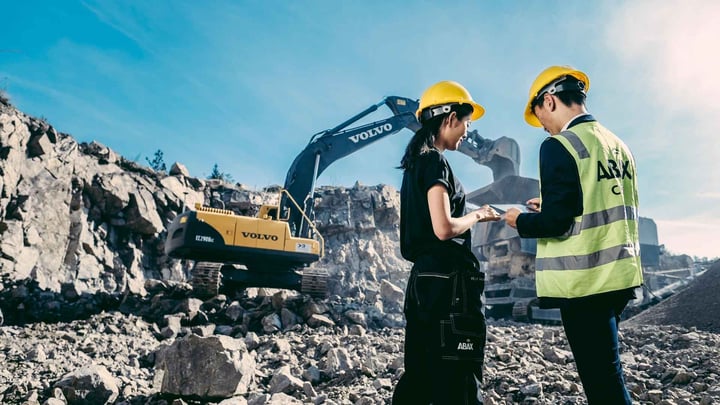
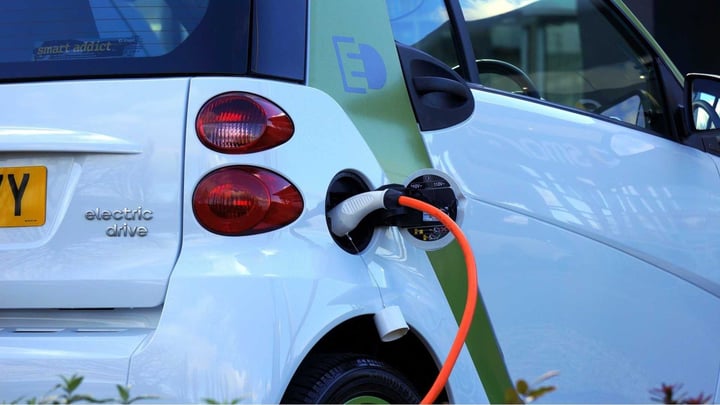




 Field Service News is published by 1927 Media Ltd, an independent publisher whose sole focus is on the field service sector. As such our entire resources are focused on helping drive the field service sector forwards and aiming to best serve our industry through honest, incisive and innovative media coverage of the global field service sector.
Field Service News is published by 1927 Media Ltd, an independent publisher whose sole focus is on the field service sector. As such our entire resources are focused on helping drive the field service sector forwards and aiming to best serve our industry through honest, incisive and innovative media coverage of the global field service sector.
Leave a Reply